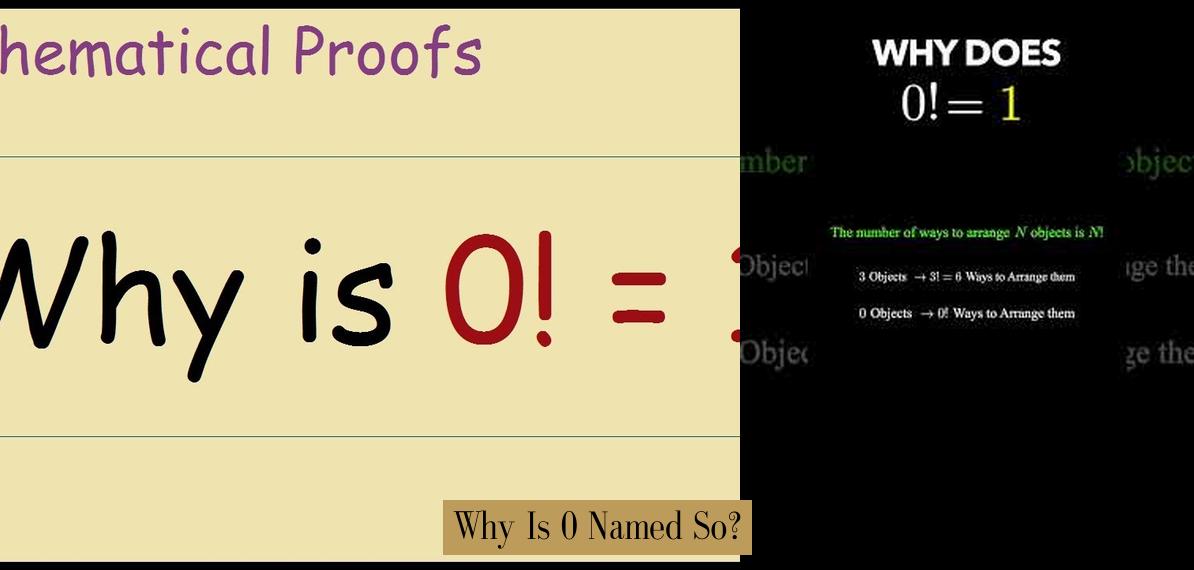Why is 0 named so? A Journey Through the History of Zero
Have you ever wondered why we call that little round dot “zero”? It seems pretty straightforward, right? But the story behind its name is surprisingly fascinating, taking us on a journey through time, cultures, and the evolution of mathematics. Buckle up, because we’re about to dive into the fascinating history of zero.
Zero’s Humble Beginnings: A Tale of Empty Spaces
To understand why zero is named “zero,” we need to start with its origins. It wasn’t always a number. In the ancient world, zero was more of a placeholder, an indicator of an empty space. Think of it like a blank space in a sentence—it doesn’t represent a word, but it tells you something about the structure.
The earliest known use of zero as a placeholder can be traced back to the ancient Sumerians in Mesopotamia around 3000 BC. They used a slanted double wedge to indicate empty spaces in their number system. You can picture it like this: if they wanted to write the number 101, they would write “1 space 1.” The space represented the absence of a ten’s place value, making it a rudimentary form of zero.
The Mayan Mystery: A Zero with a Twist
Across the globe, the Mayan civilization, independently of the Sumerians, developed their own concept of zero. This happened around 400 AD. Their zero wasn’t a placeholder like the Sumerian one. They used a shell-like symbol to represent it, giving it a numerical value, making it a true number. The fact that the Mayans developed zero independently highlights the universal need for a concept of nothingness in mathematics.
India’s Revolutionary Leap: Zero as a Number
But here’s where the story gets really interesting. The concept of zero as a number, not just a placeholder, truly took off in India around the 5th century AD. The Indians called it “sunya,” which literally means “empty” or “void.” They were the first to recognize zero’s potential as a number with its own unique properties. They even developed a system for representing zero as a numeral, which we still use today.
Arabic Influence: Sifr, the Word that Brought Zero to the World
The Indian concept of zero spread eastward to China and Southeast Asia. But it was the Arabs who played a crucial role in bringing zero to the Western world. They adopted the Indian concept and called it “sifr,” which also meant “empty” or “void.” This Arabic word “sifr” is the root of our English word “cipher,” which often refers to something secret or coded.
Fibonacci’s Arrival: Zero Enters the European Stage
Around 1200 AD, the Italian mathematician Leonardo Fibonacci introduced the concept of zero to Europe. He had traveled extensively in the Middle East and was familiar with the Arabic numeral system, including the use of zero. He called it “zefiro” in Italian, a word derived from the Arabic “sifr.” This marked a turning point in European mathematics, paving the way for advancements in algebra, calculus, and other fields.
From Zefiro to Zero: The English Language Takes a Turn
The word “zefiro” eventually morphed into “zero” in English, likely through the Venetian dialect, where it was pronounced “zevero.” The first recorded use of the word “zero” in English was in 1598. The word “zero” stuck, and it has been used ever since to represent the concept of nothingness in our number system.
Zero’s Lasting Legacy
So, why is 0 named so? It’s a story of cultural exchange, mathematical evolution, and the power of a single word to represent a complex concept. Zero’s journey from placeholder to number, from “sunya” to “sifr” to “zero,” reflects the interconnectedness of human knowledge and the enduring influence of ideas across time and cultures.
Beyond the Name: Zero’s Importance in Mathematics
The story of zero’s name is fascinating, but it’s just one part of the bigger picture. Zero is far more than just a placeholder or a symbol of emptiness. It’s a fundamental building block of our number system. Here’s why:
- Place Value: Zero plays a crucial role in place value systems. Without it, we wouldn’t be able to distinguish between 10 and 100, or 1000 and 10,000. Zero allows us to represent large numbers efficiently.
- Operations: Zero is essential for basic mathematical operations like addition, subtraction, multiplication, and division. It has unique properties that make it possible to perform these operations. For example, any number multiplied by zero equals zero, and any number added to zero remains the same.
- Number Line: Zero serves as the origin point on the number line, marking the dividing line between positive and negative numbers. It’s the foundation for understanding the concept of opposites and the relationships between numbers.
Zero: A Symbol of Possibilities
Zero is a powerful concept, representing the absence of something. But it also represents the potential for something to exist, like a blank canvas waiting to be filled with creativity. It’s a reminder that even in emptiness, there’s possibility.
So, next time you see that little round dot, remember its journey, its significance in mathematics, and its powerful symbolism. Zero may be named after “empty space,” but it’s anything but empty itself.
